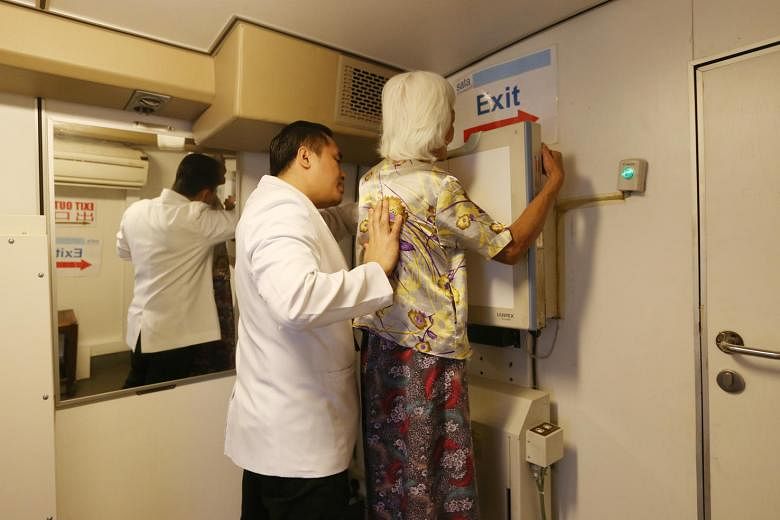A "highly unusual" outbreak of six tuberculosis cases within a period of four years at Block 203 in Ang Mo Kio has brought a forgotten disease back into the spotlight.
Even as the block's residents queued up for TB screenings yesterday, the Government and healthcare experts have assured the public that the risk of an epidemic is low.
TB, especially its multi-drug resistant strain, is not that common. According to statistics released by the Ministry of Health (MOH), the incidence of TB among Singaporeans and permanent residents last year was 38.4 per 100,000 - the second lowest in Asia after Japan.
Multi-drug resistant TB, which the six Ang Mo Kio residents were diagnosed with, makes up just a small fraction of total cases.
Dr Jeffrey Cutter, director of the MOH's communicable diseases division, puts its incidence rate at less than 1 per cent of total TB diagnoses. Last year, Singapore saw fewer than 10 such cases out of almost 1,500 TB cases observed.
TB is spread through fine respiratory droplets from an infected person. Those with TB are most likely to spread it to people in close and prolonged contact, such as family members, friends and co-workers.
While TB can be fatal - there were 55 TB deaths in 2014 - doctors The Straits Times spoke to emphasised that it can be treated.
"Unlike HIV or diabetes, which are chronic diseases, TB is gone once the patient completes his medication regimen," said Dr Leong Hoe Nam, an infectious diseases specialist at Mount Elizabeth Novena Hospital.
Dr Wong Wei Mon, deputy medical director of Raffles Medical, said regular TB typically requires six to nine months of treatment involving a cocktail of drugs; patients with multi-drug resistant TB are given less common second-line drugs for a longer period of "up to 18 months".
Regular TB patients can return to work or school after two weeks of treatment as they become non-infectious. Those with the more resistant strain have to stay in hospital longer so doctors can ascertain suitable drugs to prescribe.
Dr Ong Kian Chung, a respiratory specialist at Mount Elizabeth Hospital, said most TB patients undergo treatment where medication-taking is supervised to facilitate adherence, in line with international practices.
Dr Cutter encouraged Singaporeans not to shy away from TB screenings. "Early detection is key. Almost all TB cases are eventually treated... There is no cause for panic."


